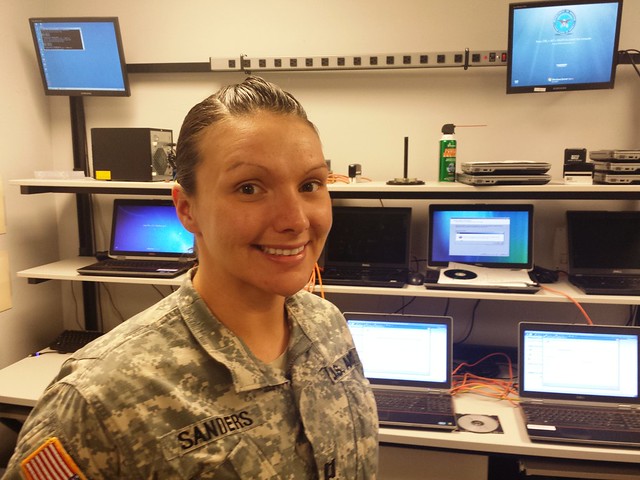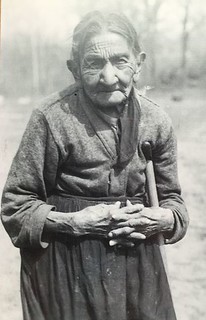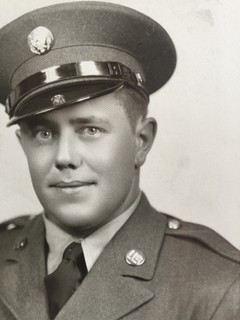Story by David Altom, Kentucky National Guard Public Affairs
[caption id="" align="alignnone" width="577"]

Capt. Dayna Sanders comes from a family with a strong military history. She also has a Native American legacy that goes back for generations. (Photo by David Altom, Kentucky National Guard Public Affairs)
[caption id="" align="alignright" width="206"]

Sanders' great grandmother, Elise Marion lived on the Turtle Mountain Indian Reservation in Belcourt, North Dakota. (Photo courtesy Capt. Dayna Sanders)
FRANKFORT, Ky. -- Like so many who join the National Guard, Capt. Dayna Sanders comes from a military family. Her husband flies Army helicopters, her father deployed to Vietnam as an aerial photographer and her grandfather served during World War II. She has an aunt who was in the Women's Army Corps and a grandmother who served during World War I.
But Sanders' legacy goes beyond just the military. She's also part Native American, with connections that cross the border into Canada and goes back for generations in time.
"My mother, Madonna Seelhammer (maiden name LaFromboise), was born to Elise and Joseph LaFromboise in Belcourt, North Dakota on the Turtle Mountain Indian Reservation. My grandmother and grandfather were half Chippewa - making my mother one half as well. The majority of my mother's family still resides on the reservation today."
Click here to find out more about National Native American Heritage Month.
"My father, Wayne Seelhammer, was born to Beverly Seelhammer (Rood) and Lyle Joseph Morrison (aka Ralph Joseph Seelhammer) in Cogswell, North Dakota. My paternal great grandfather was suspected to be a full blood member of a Sioux tribe in the area."
[caption id="" align="alignleft" width="240"]

Grandmother Elise Lafromboise is the daughter of great grandmother Elise Marion. Sanders reminds us that not all Native Americans wear their hair in braids or have traditional Indian names. (Photo courtesy Capt. Dayna Sanders)
According to Sanders, the Turtle Mountain Band of Chippewa Indians was established in 1882. Two groups of Native Americans settled in the region: the Pembina Band of Chippewa Indians and Cree. The Pembina Band was originally from the Red River valley of Minnesota and North Dakota. The Cree were from Canada.
"As a child, I was active in the pow wow circuit," said Sanders. "A pow wow is generally known as community event made up of singing, dance, and drum. I was a traditional jingle dancer. Legend has it that a dream came to a medicine man. In that dream the medicine man was shown the dress and the dance. Upon waking, the man made four dresses, one of which he gave to his wife and showed her the footwork. She then showed that with three of her friends."
Since moving away from her hometown of South Saint Paul, Minnesota, Sanders has not been back in the pow wow circuit. She still considers her self close to the prayer rituals and medicine associated with her heritage, which she intends to share with her young daughter, Elie.
[caption id="" align="alignright" width="233"]

Great grandparents Joseph and Isabelle LaFromboise. Isabelle is in her traditional dress. (Photo courtesy Capt. Dayna Sanders)
"As anyone else, I have a responsibility to pass on the knowledge and traditions of my family to my children so that they are not forgotten."
Sanders loves being in the military as much as she loves her family's heritage. "Native Americans are as proud of Americans as any other ethnicity, culture, or group of Americans. Ethnicity has nothing to do with our willingness to service and pride in our country."
Sanders is eager to share her culture and is open to talking about myths and misconceptions. For example, she says, "Not all Native Americans are the same. There are hundreds of tribes in the United States. The practices and religion of a tribe in North Dakota do not necessarily reflect those of a tribe in Arizona."
As to what she'd like to be called, it's not that hard. "Most Native Americans do not care whether or not they are called Native American, American Indian, or Indian. As long as the terminology is utilized respectfully."
Sanders said American Indians are not necessarily easily identifiable. Not all are dark skinned, with high cheekbones, and their black hair tied up in braids. And not all Native Americans have an Indian name.
[caption id="" align="alignleft" width="240"]

Grandpa Ralph Seelhammer was a private first class with the U.S. Army during World War II. (Photo courtesy Capt. Dayna Sanders)
"This may seem obvious," she said, "but many people think that Native Americans are confined to reservations, live in tipi's, and ride horses. This is definitely not true."
Sanders has deployed twice, once to Iraq as an enlisted troop and again to Kuwait as a brand new second lieutenant. In addition to her full time job with Kentucky Army National Guard's logistics shop, she is now the commander of the 2138th Forward Support Company. Her passion for the Guard is as strong as her pride in her culture.
"I love being a soldier," she said. "I'm in a field that is diverse and important to the mission. But most of all I love taking care of my soldiers! My family's influence guided me to where I am today and this is where I want to be."